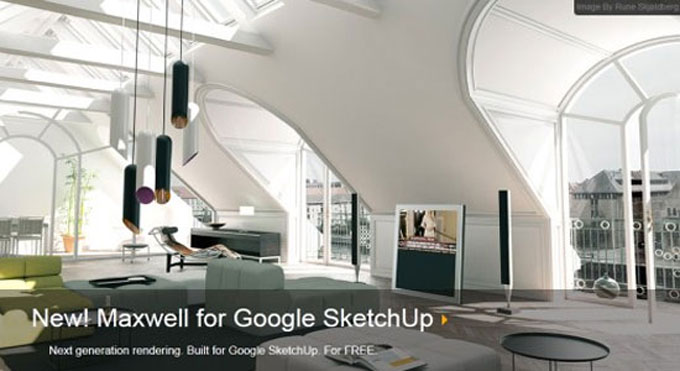Maxwell for SketchUp: Learn about Camera Control

If you go to the camera setting you will notice there is the perspective, parallel projection and two-point perspective. If you go to parallel projection and then to camera and go and choose a standard view, such as, front. What you will notice is you are getting very odd results based on the fact that Maxwell does not know how to handle this when we are using a lens type of thin.
This when you will change the lens type from thin to parallel. In this way you will make sure that you are getting a true parallel projection just like what you would expect when working in SketchUp.
Now if you go back and change the camera back to perspective and get an interesting view and then switch the lens type back to thin.
You can also go to camera and change it to two-point perspective now what you will see is that the whole thing moves down to make sure you?re actually in two-point perspective and you will also get a grabber which will allow you to move the object around the scene to get the proper composition you want in the viewpoint.
What you will see is that will not transfer over to Maxwell, the reason is Maxwell does not know how to deal with the two-point perspective instead Maxwell will provide its own tool which will allow you to get something very similar to working with this two-point perspective.
You can go to camera and go back to perspective and select a point in the scene which looks interesting, now what we will do is keep the idea same but change the overall composition and move the objects in the render.
So, what you will do is go to shift lens and enable it, this will allow you to modify the position here either the x or the y. So, you will see that by modifying the x you will be moving it to the left or to the right and you could also move it up or down based on moving it in the y.
So, the idea is that you will not modify the perspective at all but rather the placement of the perspective inside the composition of the render.
This can be extremely handy whenever you are working with architectural type of renders. So, you must remember that you would want to use the shift lens here instead of the SketchUp?s two-point perspective.
When you are using the parallel position with the camera in SketchUp you must also remember to use a lens type of parallel as well in order to make sure you are not getting any weird result.
The diaphragm helps in controlling the bokeh effect for areas out of focus which is most visible for areas that are out of focus and bright. Then you have the Z-clip planes by which you can understand the near and far plane which you can use by using the depth of field.



